Dorsal vs. ventral differences in fast Up-state-associated oscillations in the medial prefrontal cortex of the urethane-anesthetized rat
- PMID: 28003411
- PMCID: PMC5340880
- DOI: 10.1152/jn.00762.2016
Dorsal vs. ventral differences in fast Up-state-associated oscillations in the medial prefrontal cortex of the urethane-anesthetized rat
Abstract
Cortical slow oscillations (0.1-1 Hz), which may play a role in memory consolidation, are a hallmark of non-rapid eye movement (NREM) sleep and also occur under anesthesia. During slow oscillations the neuronal network generates faster oscillations on the active Up-states and these nested oscillations are particularly prominent in the PFC. In rodents the medial prefrontal cortex (mPFC) consists of several subregions: anterior cingulate cortex (ACC), prelimbic (PrL), infralimbic (IL), and dorsal peduncular cortices (DP). Although each region has a distinct anatomy and function, it is not known whether slow or fast network oscillations differ between subregions in vivo. We have simultaneously recorded slow and fast network oscillations in all four subregions of the rodent mPFC under urethane anesthesia. Slow oscillations were synchronous between the mPFC subregions, and across the hemispheres, with no consistent amplitude difference between subregions. Delta (2-4 Hz) activity showed only small differences between subregions. However, oscillations in the spindle (6-15 Hz)-, beta (20-30 Hz), gamma (30-80 Hz)-, and high-gamma (80-150 Hz)-frequency bands were consistently larger in the dorsal regions (ACC and PrL) compared with ventral regions (IL and DP). In dorsal regions the peak power of spindle, beta, and gamma activity occurred early after onset of the Up-state. In the ventral regions, especially the DP, the oscillatory power in the spindle-, beta-, and gamma-frequency ranges peaked later in the Up-state. These results suggest variations in fast network oscillations within the mPFC that may reflect the different functions and connectivity of these subregions.NEW & NOTEWORTHY We demonstrate, in the urethane-anesthetized rat, that within the medial prefrontal cortex (mPFC) there are clear subregional differences in the fast network oscillations associated with the slow oscillation Up-state. These differences, particularly between the dorsal and ventral subregions of the mPFC, may reflect the different functions and connectivity of these subregions.
Keywords: Up-state; gamma oscillations; prefrontal cortex; rat; slow oscillations; spindles.
Copyright © 2017 the American Physiological Society.
Figures
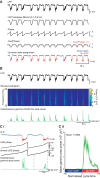

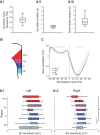

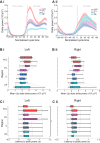

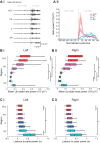
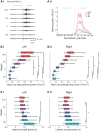

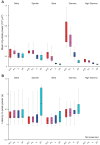
Similar articles
-
Subregional differences in the generation of fast network oscillations in the rat medial prefrontal cortex (mPFC) in vitro.J Physiol. 2015 Aug 15;593(16):3597-615. doi: 10.1113/JP270811. Epub 2015 Jun 30. J Physiol. 2015. PMID: 26041504 Free PMC article.
-
The Nucleus Reuniens Controls Long-Range Hippocampo-Prefrontal Gamma Synchronization during Slow Oscillations.J Neurosci. 2018 Mar 21;38(12):3026-3038. doi: 10.1523/JNEUROSCI.3058-17.2018. Epub 2018 Feb 19. J Neurosci. 2018. PMID: 29459369 Free PMC article.
-
Sensory responses in the medial prefrontal cortex of anesthetized rats. Implications for sensory processing.Neuroscience. 2016 Dec 17;339:109-123. doi: 10.1016/j.neuroscience.2016.09.045. Epub 2016 Oct 1. Neuroscience. 2016. PMID: 27702646
-
Differential roles of medial prefrontal subregions in the regulation of drug seeking.Brain Res. 2015 Dec 2;1628(Pt A):130-46. doi: 10.1016/j.brainres.2014.12.024. Epub 2014 Dec 18. Brain Res. 2015. PMID: 25529632 Free PMC article. Review.
-
Spontaneous neural activity during human non-rapid eye movement sleep.Prog Brain Res. 2011;193:111-8. doi: 10.1016/B978-0-444-53839-0.00008-9. Prog Brain Res. 2011. PMID: 21854959 Review.
Cited by
-
The mouse dorsal peduncular cortex encodes fear memory.Cell Rep. 2024 Apr 23;43(4):114097. doi: 10.1016/j.celrep.2024.114097. Epub 2024 Apr 12. Cell Rep. 2024. PMID: 38613783 Free PMC article.
-
Dorsal-Caudal and Ventral Hippocampi Target Different Cell Populations in the Medial Frontal Cortex in Rodents.J Neurosci. 2025 May 28;45(22):e0217252025. doi: 10.1523/JNEUROSCI.0217-25.2025. J Neurosci. 2025. PMID: 40204437 Free PMC article.
-
Electrical stimulation of the ventral tegmental area evokes sleep-like state transitions under urethane anaesthesia in the rat medial prefrontal cortex via dopamine D1 -like receptors.Eur J Neurosci. 2020 Jul;52(2):2915-2930. doi: 10.1111/ejn.14665. Epub 2020 Feb 24. Eur J Neurosci. 2020. PMID: 31891427 Free PMC article.
-
Functional networks in prolonged disorders of consciousness.Front Neurosci. 2023 Feb 17;17:1113695. doi: 10.3389/fnins.2023.1113695. eCollection 2023. Front Neurosci. 2023. PMID: 36875660 Free PMC article. Review.
-
Neurotransmitter networks in mouse prefrontal cortex are reconfigured by isoflurane anesthesia.J Neurophysiol. 2020 Jun 1;123(6):2285-2296. doi: 10.1152/jn.00092.2020. Epub 2020 Apr 29. J Neurophysiol. 2020. PMID: 32347157 Free PMC article.
References
-
- Akhter F, Haque T, Sato F, Kato T, Ohara H, Fujio T, Tsutsumi K, Uchino K, Sessle BJ, Yoshida A. Projections from the dorsal peduncular cortex to the trigeminal subnucleus caudalis (medullary dorsal horn) and other lower brainstem areas in rats. Neuroscience 266: 23–37, 2014. doi:10.1016/j.neuroscience.2014.01.046. - DOI - PubMed
-
- Carracedo LM, Kjeldsen H, Cunnington L, Jenkins A, Schofield I, Cunningham MO, Davies CH, Traub RD, Whittington MA. A neocortical delta rhythm facilitates reciprocal interlaminar interactions via nested theta rhythms. J Neurosci 33: 10750–10761, 2013. doi:10.1523/JNEUROSCI.0735-13.2013. - DOI - PMC - PubMed
Publication types
MeSH terms
Substances
Grants and funding
LinkOut - more resources
Full Text Sources
Other Literature Sources
Miscellaneous

